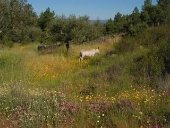




Why work hard when god made so many mongongo nuts? - !Kung
The notion that man must dominate nature emerges directly from the domination of man by man - Murray Bookchin
C'est drôle comme les gens qui se croient instruits éprouvent le besoin de faire chier le monde.-Boris Vian
El hombre es la naturaleza que toma conciencia de sí misma -Elisée Reclus
 2
2




 1
1








Why work hard when god made so many mongongo nuts? - !Kung
The notion that man must dominate nature emerges directly from the domination of man by man - Murray Bookchin
C'est drôle comme les gens qui se croient instruits éprouvent le besoin de faire chier le monde.-Boris Vian
El hombre es la naturaleza que toma conciencia de sí misma -Elisée Reclus




Why work hard when god made so many mongongo nuts? - !Kung
The notion that man must dominate nature emerges directly from the domination of man by man - Murray Bookchin
C'est drôle comme les gens qui se croient instruits éprouvent le besoin de faire chier le monde.-Boris Vian
El hombre es la naturaleza que toma conciencia de sí misma -Elisée Reclus
 1
1




Jose Reymondez wrote:I forgot to mention that I have clay soil.
Hey John, the guy also mentioned a type of plow that is basically one hook or blade, I'm not sure what it's called, that would create a furrow or opening in the soil that is used in tree plantations.
The upside is that I do have a bunch of daikon radish seed I could sow.
The downside is that it would be killer to dig the 100 nice deep holes in that compacted soil that I need to plant trees in hehe.




Why work hard when god made so many mongongo nuts? - !Kung
The notion that man must dominate nature emerges directly from the domination of man by man - Murray Bookchin
C'est drôle comme les gens qui se croient instruits éprouvent le besoin de faire chier le monde.-Boris Vian
El hombre es la naturaleza que toma conciencia de sí misma -Elisée Reclus





 1
1




Paul Cereghino- Ecosystem Guild
Maritime Temperate Coniferous Rainforest - Mild Wet Winter, Dry Summer

|
You learn how to close your eyes and tell yourself "this just isn't really happening to me." Tiny ad:
The new permaculture playing cards kickstarter is now live!
https://www.kickstarter.com/projects/paulwheaton/garden-cards
|





